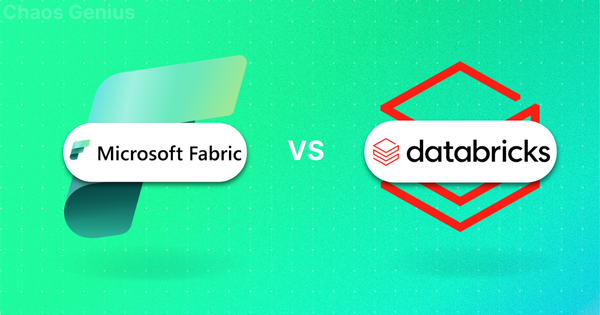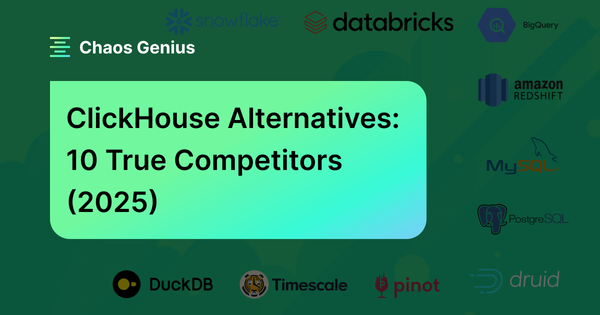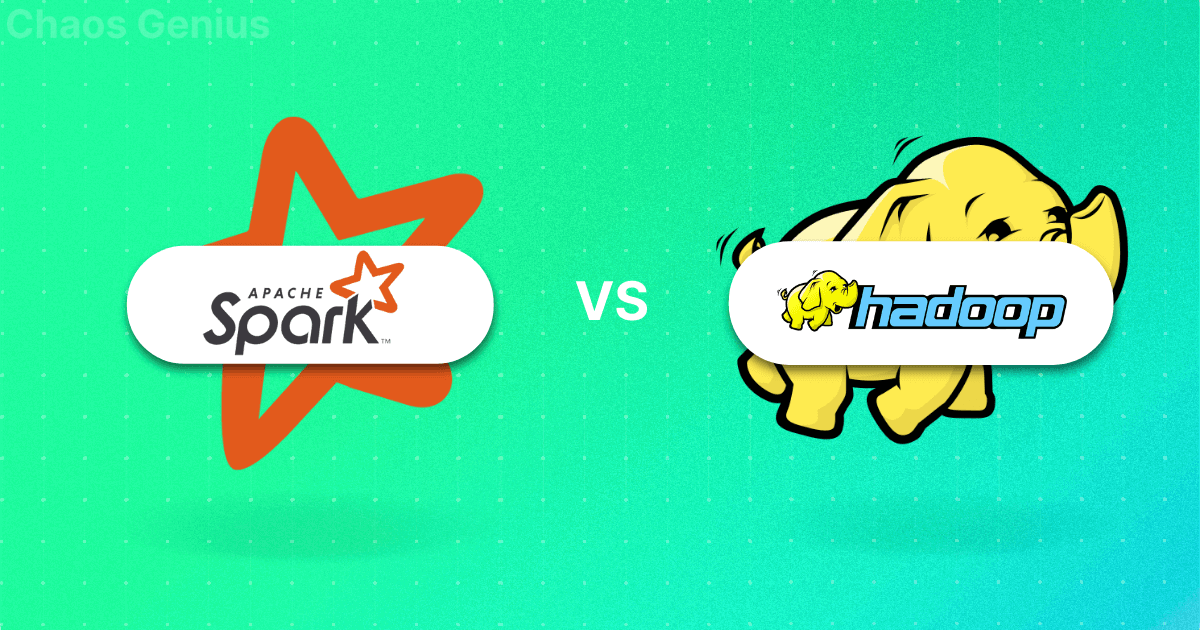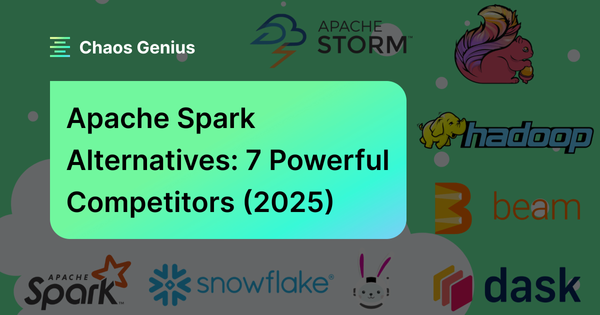Data is at the core of modern business decision-making. The exponential growth of big data, coupled with rapid advancements in AI and ML, has completely changed the landscape of data analytics. Everyone today relies on data-driven insights to guide their strategies, fueling the demand for powerful and versatile data analytics platforms. The concept of a "unified data analytics platform" has emerged to meet this need—offering a centralized hub for storing, organizing, and querying data while integrating real-time and historical data analysis. For a long time, Databricks has been a big player in big data analytics. But last year, Microsoft jumped into the game with Microsoft Fabric to challenge Databricks' dominance, offering an all-in-one solution tailored to the evolving needs of enterprises.
In this article, we will provide a detailed comparison of Microsoft Fabric vs Databricks, highlighting their key features, strengths, and weaknesses. By the very end, you will have a clearer understanding of which platform aligns best with your needs.
Table of Contents
Microsoft Fabric vs Databricks—Technical Breakdown of Analytics Powerhouses
In a rush? Here’s a quick rundown of the key differences between Microsoft Fabric vs Databricks!
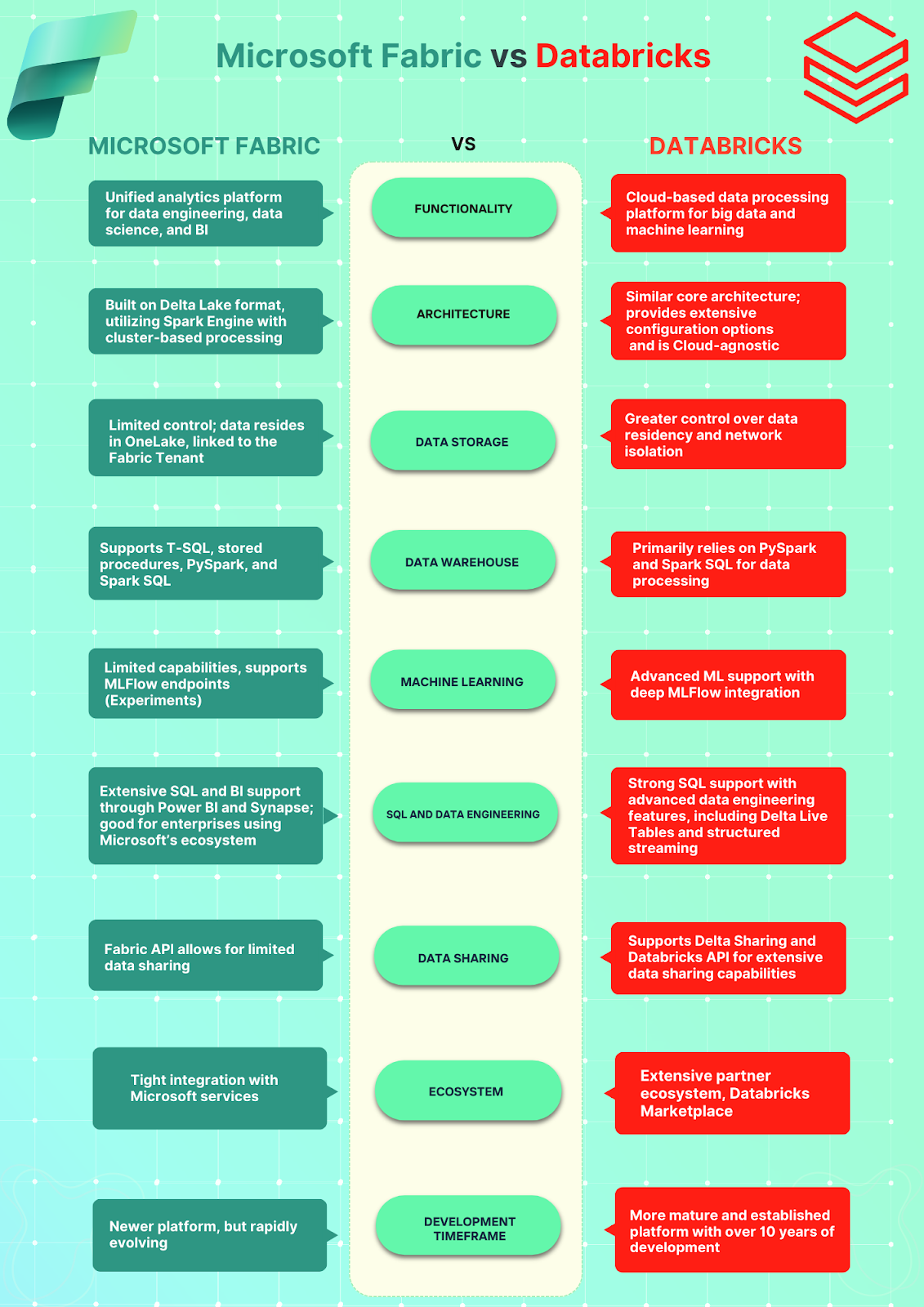
Now, let's dive deeper into each of these platforms, starting with Databricks.
What is Databricks?
Let's take a step back to 2013, when "big data" was the hottest buzzword around. Companies were struggling to make sense of the massive amounts of data they were collecting. That's when a team of seven computer scientists from UC Berkeley, who had recently created Apache Spark, a unified analytics engine for big data processing that was taking the tech world by storm.
The same crew—Ali Ghodsi, Andy Konwinski, Ion Stoica, Matei Zaharia, Patrick Wendell, Reynold Xin, and Arsalan Tavakoli-Shiraji—later founded Databricks with a bold mission: to make big data and AI accessible to everyone. They wanted to take Spark's power and wrap it in a user-friendly, cloud-based platform that would make data science and machine learning easy for anyone.
Fast forward to today, and Databricks has become something they call a "Lakehouse" platform. So, what's that all about?
In a nutshell, the Databricks Lakehouse Platform is a unified data platform that combines the best elements of data lakes and data warehouses. It's built on open standards and designed to support all data workloads—from streaming analytics to business intelligence, data science and machine learning.
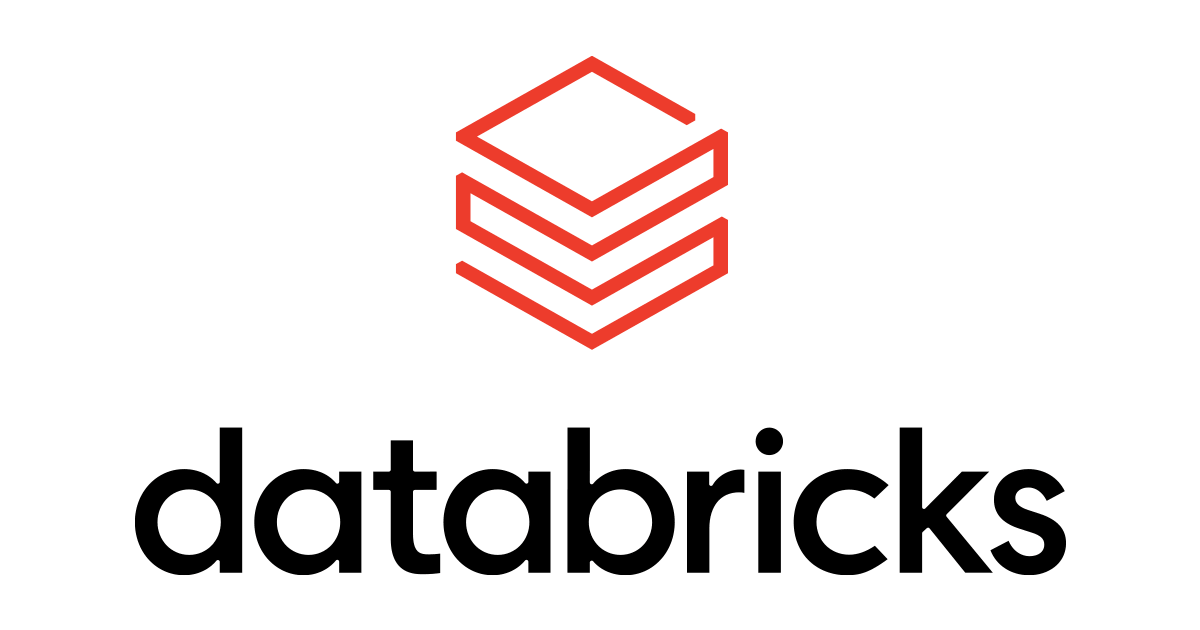
Databricks offers a bunch of features and tools for all your data needs. Here's what they offer:
1) Data Lakehouse Architecture: Databricks combines the best of both worlds—data lakes and warehouses. This way, you can manage your data much more efficiently.
2) Delta Lake: Databricks also has Delta Lake, which is like a supercharged data lake with ACID transactions, making sure your data is reliable and consistent.
3) Unified Workspace: Databricks offers a unified workspace where teams can collaborate seamlessly on data projects.
4) Notebooks: Databricks has interactive notebooks for code, docs, and visualizations. They support multiple languages, including Python, R, Scala, and SQL.
5) Apache Spark Integration: Databricks is built on Apache Spark. It enables efficient, distributed processing of large datasets.
6) Scalability and Flexibility: Databricks can automatically scale compute resources. It adjusts them based on workload demands, to meet varying data processing needs.
7) Data Processing and ETL: Databricks has tools for ETL. They help users manage data workflows efficiently.
8) Machine Learning and AI: Databricks support the entire machine learning lifecycle—from building and training models to deploying them. It also includes MLflow for tracking experiments and managing models.
9) Real-Time Data Processing: Databricks can process streaming data in real-time, so you can get timely insights and take action ASAP.
10) Data Visualization: Databricks has a strong integration with visualization tools. Users can create interactive dashboards and data visualizations.
11) Security and Compliance: Databricks has features for data security and compliance. They include role-based access control, encryption, auditing, and more.
12) Governance solution: Unity Catalog is Databricks' built-in, centralized governance solution. It manages data and AI assets across the platform.
13) Multi-Cloud Support: Databricks is compatible with major cloud service providers like Azure, AWS, and Google Cloud.
14) Generative AI Solutions: Databricks offers tools for integrating generative AI applications, allowing businesses to leverage advanced AI capabilities within their data workflows.
… and a whole lot more features!!
Databricks is commonly used for:
🔮 Big Data Processing:Databricks can handle large datasets for analytics and reporting.
🔮 Machine Learning: From feature engineering to model training and deployment, Databricks supports the entire ML lifecycle.
🔮 Data Engineering: Databricks provides tools for building and managing data pipelines, whether for batch processing or real-time streaming.
🔮 Collaborative Data Science: Databricks helps teams to work together on data projects seamlessly.
What makes Databricks stand out is that it can handle all kinds of workloads in one place. This means you don't need separate systems for different tasks. With this unified approach, you can save a lot of money and get more done.
Save up to 50% on your Databricks spend in a few minutes!
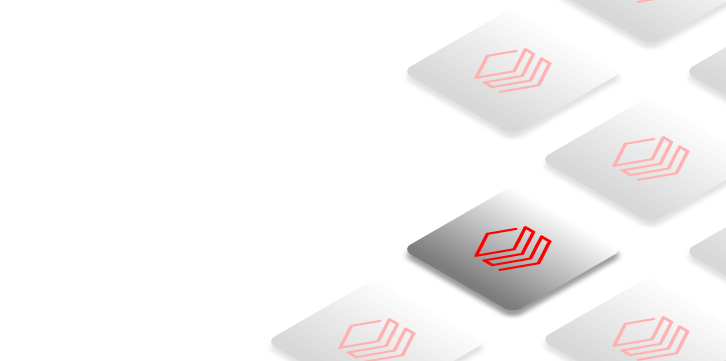

Watch this video on Databricks for a complete overview of its capabilities and features.
Microsoft Fabric vs Databricks
Now we've checked out Databricks, it's time to look at the newcomer in this space—Microsoft Fabric.
What is Microsoft Fabric?
Microsoft Fabric was launched in May 2023. Microsoft announced it at the Microsoft Build conference, calling it an all-in-one solution for data and analytics. Just six months later, the wait was over—Microsoft Fabric was open to everyone.
Microsoft Fabric is what, exactly? It is an end-to-end analytics platform developed by Microsoft, designed to simplify and unify the data analytics process for organizations. It integrates various data services and tools into a single Software as a Service (SaaS) solution, enabling users to manage data movement, processing, transformation, and visualization all in one place. It's perfect for big companies that need strong analytics without the hassle of dealing with multiple services.
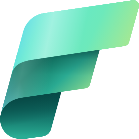
Microsoft Fabric is packed with a bunch of features and tools for all your data needs. Here's what they offer:
1) Data Integration: Microsoft Fabric simplifies data integration from nearly any source into a unified, multi-cloud data lake.
2) OneLake: OneLake serves as the central hub for all data within Microsoft Fabric. It automatically indexes data for easy discovery, sharing, governance, and compliance, making sure that all data across the organization is accessible and manageable from one place.
3) Data Engineering: Microsoft Fabric includes tools to help design and manage systems for organizing and analyzing large volumes of data, supporting complex ETL (Extract, Transform, Load) scenarios.
4) Real-Time Analytics: Microsoft Fabric supports real-time data processing, enabling users to explore, analyze, and act on large volumes of streaming data with low latency, which is crucial for timely decision-making.
5) Data Factory: Data Factory is Microsoft’s data integration service. Data Factory is integrated in Microsoft Fabric, allowing you to create, schedule, and manage data pipelines for moving and transforming data at scale.
6) Copilot in Fabric: Copilot leverages AI to enhance productivity by allowing users to interact with the platform using natural language. This feature can be used across notebooks, pipelines, and reports to automate tasks and generate insights.
7) Data Warehousing: Microsoft Fabric provides a highly scalable data warehouse with industry-leading SQL performance, allowing independent scaling of compute and storage resources.
8) Business Intelligence: Microsoft Fabric integrates seamlessly with Microsoft 365, enabling the creation of visually immersive, interactive insights directly within familiar apps like Excel, Teams, and PowerPoint.
9) AI and Machine Learning: Microsoft Fabric incorporates AI capabilities at various levels, including support for building custom ML models and enabling advanced analytics directly within the platform. It also supports generative AI for creating tailor-made AI experiences.
10) Data Governance and Compliance: Microsoft Fabric offers robust data governance and compliance features, including data classification, access controls, and auditing capabilities.
11) Integration with Power BI: Microsoft Fabric has deep integration with Power BI, which is a powerful business intelligence tool for creating interactive dashboards and reports
… and a whole lot more features!!
The primary use cases for Microsoft Fabric are similar to those of Databricks, covering a wide range of data-related tasks:
🔮 Data Integration and Engineering:Microsoft Fabric offers strong tools for moving and transforming data, making it easier to manage data pipelines.
🔮 Data Science and Machine Learning: Synapse Data Science allows users to create and deploy machine learning models using popular programming languages and frameworks.
🔮 Business Intelligence: The deep integration with Power BI makes Microsoft Fabric a powerful platform for creating interactive dashboards and reports.
🔮 Real-Time Analytics: Microsoft Fabric can process streaming data, which supports real-time decision-making and enhances operational intelligence.
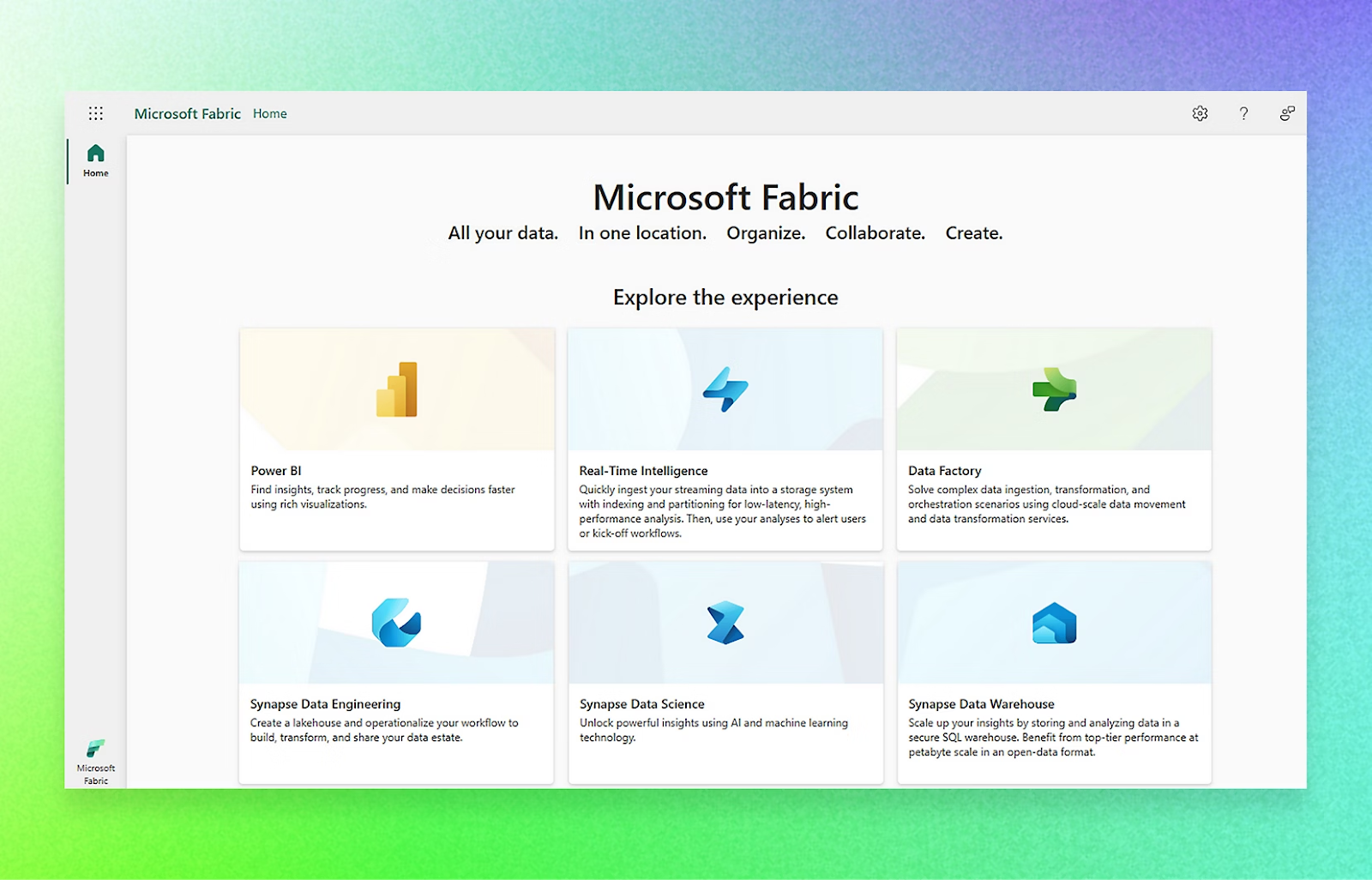
What makes Microsoft Fabric special is how well it fits into the whole Microsoft ecosystem. It's built to work smoothly with other Microsoft tools and services.
Watch this video on Microsoft Fabric for in-depth insights into its functionalities and updates.
Microsoft Fabric vs Databricks
Now that we've introduced both Databricks and Microsoft Fabric, let's dive into our detailed comparison of these two powerful titans.
What Is the Difference Between Databricks and Fabric—Top 9 Features Showdown
Let's compare Microsoft Fabric and Databricks by looking at nine key features. This will help you choose the best platform for your needs.
1) Microsoft Fabric vs Databricks — Architecture Breakdown
Microsoft Fabric Architecture
Microsoft Fabric is built on a unified architecture centered around OneLake—a central data lake storage system capable of ingesting data from Microsoft platforms, third-party services like S3 and GCP, and even on-premises data sources such as databases, filesystems, and APIs.
The Microsoft Fabric architecture is layered and integrates several components:
a) OneLake: The Central Storage Layer
OneLake is designed to provide a centralized and scalable storage solution for Microsoft Fabric. It supports a wide range of data sources, including Azure Data Services, Amazon S3, and Google Cloud Platform, allowing organizations to consolidate their data from multiple sources into a single repository.
OneLake include:
- Delta Lake Format: All data stored in OneLake is in the open Delta Lake format, which provides a unified and efficient way to manage structured and unstructured data.
- Data Shortcuts: Users can create shortcuts pointing to external data locations like Azure Data Lake Storage Gen2 or Amazon S3, reducing the need for data duplication.
- Data Hub: OneLake's data hub serves as the central interface for discovering, exploring, and utilizing data assets within the Fabric ecosystem.
b) Workloads and Services
Microsoft Fabric offers several distinct workloads and services that run on top of OneLake, each tailored for specific data tasks. These include:
🔮 Data Factory: A comprehensive data integration service within Fabric, Data Factory simplifies the process of ingesting, transforming, and orchestrating data from diverse sources.
🔮 Synapse Data Warehousing: A lake-centric data warehousing solution that allows independent scaling of compute and storage, providing flexibility in managing large-scale analytical workloads.
🔮 Synapse Data Engineering: Leveraging Apache Spark, this service supports the design, construction, and maintenance of data pipelines and data estates to facilitate robust data analysis.
🔮 Synapse Data Science: This workload enables the creation and deployment of end-to-end data science workflows at scale, supporting everything from model development to operationalization.
🔮 Synapse Real-Time Analytics: Focused on real-time data analysis, this service is ideal for processing and analyzing streaming data from applications, websites, and devices.
🔮 Power BI: Fabric integrates Power BI, Microsoft's flagship business intelligence tool, enabling users to create interactive reports and dashboards that draw insights from the data stored in OneLake.
🔮 Data Activator: A no-code platform within Fabric designed for data observability and monitoring, allowing users to set up alerts and triggers based on data conditions without writing code.
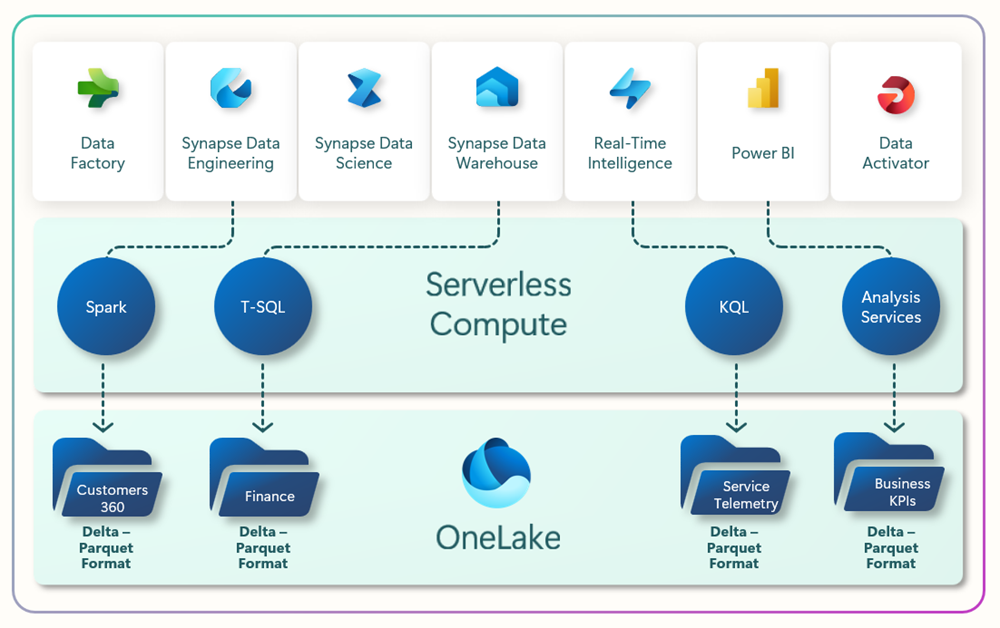
c) Open and Extensible Architecture
One of the key advantages of Microsoft Fabric's architecture is its open and extensible nature. Since OneLake uses the open Delta Lake format, the Fabric architecture is also open, allowing for integration with various third-party tools and services that support Delta Lake.
Databricks Architecture
Databricks architecture is built to integrate seamlessly with major cloud providers like Azure, AWS, and Google Cloud, providing a versatile environment for data professionals. The architecture is characterized by its hybrid Platform-as-a-Service (PaaS) model, which combines both control and compute planes to optimize data processing and management.
The Databricks architecture is layered and integrates several components:
a) Control Plane:
Control Plane is managed by Databricks and includes backend services that support the platform's operations. This plane handles tasks such as user authentication, job scheduling, cluster management, and the Databricks web application interface. All control plane operations, including metadata management and user interface activities, are managed by Databricks.
b) Compute Plane:
Compute Plane is where actual data processing takes place. Databricks offers two types of compute planes:
- Serverless Compute Plane: Resources are managed entirely within Databricks' infrastructure, enabling automatic scaling without requiring users to manage clusters. This is ideal for environments where ease of use and scalability are priorities.
- Classic Compute Plane: Resources run within the user's cloud account, providing greater control and isolation. Each workspace can have its own virtual network, enhancing security and compliance with organizational policies.
c) Workspace Storage:
Each Databricks workspace is associated with a storage solution, such as an S3 bucket for AWS or a storage account for Azure. This storage is utilized for operational data, including notebooks, job run details, and logs. The Databricks File System (DBFS) serves as an abstraction layer that allows users to interact with data stored in these buckets seamlessly. It supports various data formats and provides a unified interface for data access.
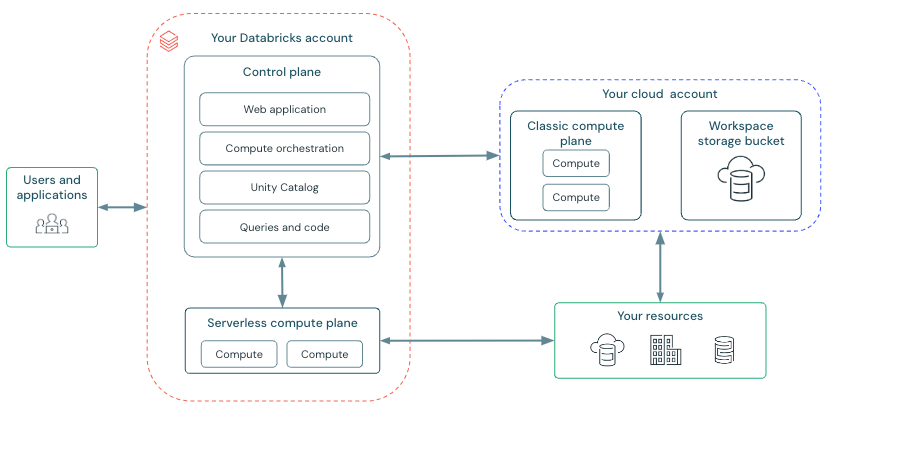
Check out this article to learn more in-depth about Databricks architecture
2). Microsoft Fabric vs Databricks — Query Performance Battle
Now that we've covered the architecture and components of Microsoft Fabri vs Databricks, fast query performance is a critical requirement for any data platform. Both Microsoft Fabric and Databricks have put significant effort into optimizing query performance, but they approach this challenge in different ways.
Let's compare the performance of these two powerful platforms.
Microsoft Fabric Performance
Microsoft Fabric leverages several technologies to optimize query performance:
a) Dynamic Management Views (DMVs): Microsoft Fabric provides DMVs to monitor query execution. They let admins track performance metrics and tweak settings for optimal query processing.
b) Storage and Compute Separation: Microsoft Fabrics' architecture separates storage (via OneLake) from compute. This allows Fabric to scale efficiently based on workload demands.
c) Direct Lake Mode: Fabric offers Power BI users a "Direct Lake" mode. It allows real-time querying of data in OneLake without any intermediate storage or data movement. This significantly reduces latency and enhances performance for BI workloads.
d) Vertipaq Engine: For BI tasks, Fabric uses the Vertipaq engine — an in-memory columnar database that's super fast at handling large datasets. It compresses data efficiently and processes queries quickly.
e) Distributed Query Processing: Microsoft Fabric can spread query processing across multiple nodes. It can break down complex queries and execute them in parallel. This means it can handle huge datasets efficiently and reduce query time.
f) Query Caching: To make things even faster, Fabric has smart caching that speeds up frequently run queries.
g) Integration with Azure Synapse Link: Microsoft Fabric integrates with Azure Synapse Link. It lets you do real-time analytics on operational data without slowing your transactional systems.
h) V-Order Behavior: Microsoft Fabric lets you manage V-Order behavior at the warehouse level. This optimizes data ingestion and query performance. This feature applies special sorting, row group distribution, dictionary encoding and compression on parquet files, thus requiring less network, disk, and CPU resources in compute engines to read it, providing cost efficiency and performance.
Databricks Performance
Databricks is built on Apache Spark, a powerful distributed computing system, and employs various techniques to enhance query performance. Databricks has several performance optimizations built into its platform:
a) Photon Engine: Databricks' native vectorized query engine, Photon, accelerates SQL and data processing workloads by leveraging modern CPU architectures to execute queries in parallel. Photon provides up to 12x speedups compared to traditional Databricks Runtime.
b) Adaptive Query Execution: Databricks utilizes Spark's Adaptive Query Execution, which dynamically adjusts query plans based on runtime statistics. This allows for optimizations such as:
- Data Skipping: Automatically skips reading unnecessary data files based on query filters.
- Dynamic Partition Pruning: Reduces the amount of data read by pruning partitions based on filter conditions.
c) Delta Engine: Delta Engine is optimized for Delta Lake tables, providing high-performance query execution with features like ACID Transactions and Schema Evolution.
d) Caching: Databricks implements various caching mechanisms, including data caching and query result caching.
e) I/O Optimization: Databricks include optimizations for data skipping, data layout, and I/O efficiency.
f) Auto-scaling and Serverless Options: Databricks offers serverless compute options that automatically scale resources based on query complexity and data volume. This dynamic scaling guarantees that resources are allocated efficiently, leading to faster query performance.
3). Microsoft Fabric vs Databricks — Scalability
When you're dealing with big data, one thing is clear: you need to be able to handle massive volumes of data without breaking a sweat. Microsoft Fabric and Databricks are both designed to help you do just that, but they take different approaches to making it happen.
Microsoft Fabric Scalability
Microsoft Fabric is based on Azure's extensive ecosystem. This platform helps you connect all your Azure services smoothly, so you can manage data from start to finish in one place. What makes it super scalable are features like:
a) Automatic Partitioning and Distribution: Microsoft Fabric helps apps scale smoothly by spreading workloads across multiple nodes. This means your app can handle more data without a hitch. It works with both stateful and stateless microservices, so you can pick what's best for your app.
b) OneLake as a Central Repository: OneLake serves as a unified data lake that integrates data from multiple sources. This centralization simplifies data management and enhances performance by reducing the need for data duplication and complex data pipelines.
c) Multi-Engine Support: Microsoft Fabric supports multiple compute engines, which includes TSQL and KQL, alongside Spark, allowing users to choose the most effective processing method for their needs. This flexibility is crucial for optimizing performance based on specific workloads.
d) User-Friendly Interface: Microsoft Fabric's low-code/no-code approach enables users with diverse technical expertise to take advantage of its features without requiring extensive programming knowledge, making it accessible to both business users and data specialists.
Databricks Scalability
Databricks offers a range of scalability features:
a) Auto-scaling Clusters: Databricks can automatically scale the number of worker nodes in a cluster based on the current workload.
b) Multi-cluster Workloads: Databricks support running multiple clusters simultaneously, allowing for parallel processing of different workloads.
c) Serverless SQL Warehouses: These provide instant, elastic SQL compute that scales automatically.
d) Global Data Access: Databricks Unity Catalog allows for seamless data access across different regions and cloud providers.
e) Delta Engine Optimizations: The Delta Engine includes various optimizations for handling large-scale data efficiently.
f) Multi-cloud Support: Databricks' ability to run on multiple cloud platforms allows for flexible scaling across different cloud environments.
Microsoft Fabric vs Databricks both offer great scalability options, but they're meant for different situations.
If you're already using Azure, Microsoft Fabric's scalability is a big plus. It's deeply connected to Azure's infrastructure, so you can scale easily within the Azure ecosystem. This tight integration between Fabric's components, like OneLake and Synapse, can make scaling end-to-end data workflows more efficient.
Databricks, with its deep roots in Apache Spark, has a history of handling huge data processing tasks. Its auto-scaling and support for multiple workloads give you flexibility for various use cases. Plus, it works with multiple clouds, which is great for organizations that want to scale across different cloud environments or avoid being tied to one vendor.
4). Microsoft Fabric vs Databricks — Features, Ecosystem and Integration
When it comes to data platforms, two things really matter: what they can do and what features they provide. Now in this section, we're going to see how Microsoft Fabric vs Databricks measure up in these areas.
Microsoft Fabric Features
Microsoft Fabric has some amazing features, like:
- Microsoft Fabric centralizes data storage across multiple environments through OneLake
- Microsoft Fabric is tightly integrated with Power BI, offering robust data visualization and reporting capabilities directly within the platform.
- Fabric supports real-time analytics and processing.
- Microsoft Fabric's low-code/no-code nature lets users create data operations, even with little coding experience.
- Fabric leverages the power of Azure Synapse Analytics, offering seamless data engineering, big data processing, and advanced analytics.
Databricks Features
Databricks provides a comprehensive suite of features, like:
- Databricks provides a collaborative environment through notebooks that support multiple languages
- Databricks has Delta Lake as the default format for all operations. So when you create a table, bring in new data, or make changes to your data on Databricks, it will automatically use Delta Lake as the underlying storage format.
- Databricks uses MLflow for managing the end-to-end machine learning lifecycle, including experiment tracking, model management, and deployment.
- Databricks Marketplace for discovering and sharing data assets.
So, what do you get with Microsoft Fabric and Databricks? Here's a quick rundown of their features:
| Features | Microsoft Fabric | Databricks |
|---|---|---|
| SQL Analytics | ✅ | ✅ |
| Python/R/Scala Support | ✅ | ✅ |
| Notebooks | ✅ | ✅ |
| Apache Spark | ✅ | ✅ |
| Data Engineering | ✅ | ✅ |
| Machine Learning | ✅ | ✅ |
| MLflow Integration | ✅ | ✅ |
| Delta Lake | ✅ | ✅ |
| Real-time Streaming | ✅ | ✅ |
| BI and Visualization | ✅ (Power BI) | Limited |
| Multi-cloud Support | ✅ | ❌ |
| ETL/ELT | ✅ | ✅ |
| Data Governance | Evolving features with Purview | Mature governance with Unity Catalog |
| Databricks SQL | ❌ | ✅ |
| Delta Live Tables | ❌ | ✅ |
| Model Serving | ❌ | ✅ |
Microsoft Fabric Ecosystem and Integration
- Microsoft Fabric is deeply integrated into the Microsoft ecosystem and Azure services.
- Microsoft Fabric provides seamless integration with Microsoft 365 and other Microsoft tools.
- Microsoft Fabric provides support for open source tools and languages (Python, R, Scala).
- Microsoft Fabric integrates with Azure Machine Learning for advanced ML capabilities
Databricks Ecosystem and Integration
- Databricks is cloud agnostic and supports multiple cloud platforms (AWS, Azure, GCP)
- Databricks integrates with a broad range of data sources and destinations.
- Databricks is heavily invested in open-source technologies, such as Apache Spark, MLflow, and Delta Lake, which are central to its platform and enhance its collaborative capabilities.
Microsoft Fabric and Databricks offer similar data analytics features but with different strengths. Fabric integrates well with Microsoft tools, especially Power BI, and is perfect for organizations already invested in Microsoft. Databricks excels in advanced data science and machine learning, with strong support for open source libraries and multi-cloud flexibility. Both of em’ have robust data engineering and SQL analytics capabilities. The choice between them really depends on specific use cases and existing technology investments.
5). Microsoft Fabric vs Databricks — Security and Governance
These days, we're all about keeping data safe and private. So, any serious data platform needs to have top security and governance in place. Both Microsoft Fabric and Databricks have placed a strong emphasis on these areas, but they approach them in slightly different ways.
Microsoft Fabric Security and Governance
Microsoft Fabric leverages Azure's comprehensive security infrastructure and adds several layers of security and governance features:
a) Microsoft Entra ID (formerly Azure Active Directory) Integration: Microsoft Fabric uses Microsoft Entra ID (formerly Azure Active Directory) for authentication and access control, providing a centralized identity management system.
b) Role-Based Access Control (RBAC): Granular access control can be implemented across all Fabric services using Azure RBAC.
c) Data Encryption: Microsoft Fabric ensures data protection through encryption both at rest and in transit. By default, Fabric encrypts all data at rest using Microsoft-managed keys. It also supports customer-managed keys (CMKs) for organizations that need more control over their encryption. Data in transit is secured using Transport Layer Security (TLS) 1.2 or higher, ensuring secure communication channels.
d) Auditing and Monitoring: Microsoft Fabric integrates with Azure Monitor and Azure Log Analytics for comprehensive auditing and monitoring.
e) Compliance and Governance: Microsoft Fabric integrates with Microsoft Purview for advanced data governance, including features like Data Loss Prevention (DLP) policies. These policies can automatically detect and manage sensitive data, ensuring compliance with industry standards such as ISO 27001, HIPAA, and others. On top of that, Fabric supports auditing and monitoring through detailed logs, helping organizations to track data usage, adoption, and compliance across the platform.
f) Data Residency: Microsoft Fabric allows for control over data residency to meet regulatory requirements.
g) Row-Level and Column-Level Security: These features allow for fine-grained access control at the data level.
Databricks Security and Governance
Databricks also offers a comprehensive set of security and governance features:
a) Data Governance with Unity Catalog: Databricks' Unity Catalog provides a unified governance layer across all data assets, enabling centralized access control, audit logging, and data lineage tracking. This makes it easier for organizations to keep their data secure while maintaining compliance with internal and external regulations.
b) Fine-grained Access Control: Databricks support access control at the workspace, cluster, notebook, and data level.
c) Data Encryption: Databricks encrypt data at rest and in transit, with support for customer-managed keys.
d) Authentication and Single Sign-On: Databricks supports single sign-on and robust access control mechanisms, including IP access lists and customer-managed VPCs.
e) Audit Logs: Comprehensive logging of user activities and data access.
f) Compliance: Databricks maintains various compliance certifications including SOC 2 Type II, HIPAA, GDPR, and more.
g) Securable Objects: Databricks treats various entities (like clusters, jobs, notebooks) as securable objects, allowing for consistent security policies.
h) Dynamic Access Control: Databricks supports attribute-based access control for dynamic policy enforcement.
Both Microsoft Fabric and Databricks offer robust security and governance features that meet enterprise-grade requirements.
6). Microsoft Fabric vs Databricks — Machine Learning Capabilities (AI, ML, and LLMs)
Microsoft Fabric and Databricks both excel in machine learning. Both are super powerful for advanced analytics, AI, and large language models. The difference is, that they're designed for different user needs and ecosystems.
Microsoft Fabric Machine Learning Capabilities
Microsoft Fabric's Machine Learning Capabilities come from its close tie to the Microsoft ecosystem, especially Azure Machine Learning and Synapse Data Science. Fabric provides a complete workspace for data science and machine learning, featuring notebooks that support multiple languages—like Python, R, and Scala—essential for creating varied ML models. The platform also provides automated machine learning (AutoML) to quickly choose models and fine-tune hyperparameters, saving you time in developing models.
Fabric's standout feature is its seamless integration with Azure Machine Learning. It lets users leverage advanced ML tools, including managed endpoints for deploying models. This integration supports deep learning frameworks like TensorFlow and PyTorch. Also, Fabric integrates with Spark ML. It provides access to distributed ML workloads, which are essential for large-scale data processing tasks.
Microsoft Fabric has strong model management and interpretability features. They ensure that models can be tracked, versioned, and understood in terms of feature importance. A unique offering in Fabric is Copilot, powered by Azure OpenAI, which assists users in creating dataflows, pipelines, and even building machine learning models through conversational interfaces. Additionally, Fabric's deep integration with Microsoft 365 apps like Excel, Teams, and Power BI makes it easier for business users to access data. This promotes a more democratized approach to machine learning in organizations.
Databricks Machine Learning Capabilities
Databricks, on the other hand, is known for its emphasis on machine learning and data engineering within a single platform. The foundation of its ML capabilities is MLflow, which is directly integrated into Databricks for complete experiment tracking, model management, and deployment. Databricks also provides AutoML tools to speed up model construction, as well as a Feature Store, which is a centralized repository for managing and serving machine learning features across models and teams.
Databricks also supports many prominent deep learning frameworks and allows for distributed training, making it perfect for massive data sets and complex models. It also provides GPU acceleration, which is essential when training massive models, especially in deep learning applications. The platform's Model Serving capabilities enable users to deploy models via REST APIs straight from the environment, which streamlines the deployment process. Furthermore, Databricks allows you to design end-to-end ML pipelines using Notebook, which improves collaboration among data scientists by providing shared, collaborative workspaces.
7). Microsoft Fabric vs Databricks — Marketplace
Let's talk about what makes a data platform super useful: having ready-made solutions, integrations, and a strong network of partners. Now, let's see how Microsoft Fabric vs Databricks provides.
Microsoft Fabric Marketplace
Currently, Microsoft Fabric does not feature a dedicated marketplace for third-party integrations or pre-built solutions. But it offers seamless integration with other Microsoft services.
Databricks Marketplace
Databricks features a robust marketplace that offers a variety of pre-built solutions, integrations partner ecosystems:
a) Databricks Marketplace: Offers a variety of pre-built solutions, including datasets, notebooks, and ML models. Partners can publish their solutions directly to the marketplace.
b) Partner Connect: Simplifies the process of connecting Databricks with various third-party tools and services.
c) Technology Partners: A wide range of technology partners offer integrations with Databricks, covering areas like data integration, visualization, and security.
d) Consulting Partners: A network of consulting partners provides expertise in implementing and optimizing Databricks solutions.
e) Open-source Ecosystem: Strong ties to the open-source community, with many popular open-source projects (like Delta Lake and MLflow) either originating from or closely associated with Databricks.
8). Microsoft Fabric vs Databricks — Cloud Platform and Partner Integrations
Now, let's take a look at how Microsoft Fabric vs Databricks handles working across different cloud platforms and Partners.
Microsoft Fabric Cloud Platform Partners
Microsoft Fabric is an all-in-one analytics solution that's tightly linked to the Microsoft universe, including Azure and Office 365. This combo gives you a smooth ride across Microsoft services, offering one place to handle data, get business insights, and do machine learning. Since Fabric is part of Microsoft 365, it easily connects data from Teams, SharePoint, and other sources, giving you a complete picture of your business. Plus, its tie-in with Azure means you can tap into Azure's massive cloud power, so your data operations are scalable and secure.
Databricks Partners
Databricks has a strong partner network, including over 1,200 global partners that provide complementary services in data analytics and AI. Its integration with major cloud providers (Azure, AWS, and Google Cloud) allows organizations to leverage existing cloud infrastructure while benefiting from Databricks' advanced analytics capabilities.
Azure Databricks is a first-party service that offers native integration with Azure services, providing a streamlined experience for users already within the Microsoft ecosystem.
9). Microsoft Fabric vs Databricks — Pricing Comparison
We're at the final stretch! Now it's time to compare how Microsoft Fabric vs Databricks handle pricing.
Microsoft Fabric Pricing Model
You can try Microsoft Fabric for free and explore various pricing options tailored to your needs. Keep in mind that prices are estimates and can vary based on agreements with Microsoft, the purchase date, and currency exchange rates. Pricing is primarily calculated in US dollars.
Capacity Pricing
Microsoft Fabric provides a shared pool of capacity that supports various functions, including data modeling and business intelligence. Here are some benefits of Microsoft Fabric capacity:
- Simplified purchasing with a single pool of compute for all workloads.
- Flexible use of Capacity Units (CUs) without pre-allocating.
- Pooled CUs reduce costs by avoiding idle workloads.
- Users can scale capacity up or down as needed.
- Centralized dashboard for monitoring usage and costs.
Pricing Structure:
| SKU | Capacity Unit (CU) | Pay-as-you-go | Reservation |
| F2 | 2 | $0.36/hour | $0.215/hour |
| F4 | 4 | $0.72/hour | $0.429/hour |
| F8 | 8 | $1.44/hour | $0.857/hour |
| F16 | 16 | $2.88/hour | $1.714/hour |
| F32 | 32 | $5.76/hour | $3.427/hour |
| F64 | 64 | $11.52/hour | $6.853/hour |
| F128 | 128 | $23.04/hour | $13.706/hour |
| F256 | 256 | $46.08/hour | $27.412/hour |
| F512 | 512 | $92.16/hour | $54.824/hour |
| F1024 | 1024 | $184.32/hour | $109.648/hour |
| F2048 | 2048 | $368.64/hour | $219.295/hour |
OneLake Storage
OneLake is a centralized storage solution for all data, offering several advantages:
- Simplified purchasing with a single storage service.
- A single copy of data accessible across all analytical engines.
- Integration with existing third-party storage systems.
- Open data formats for easier access to various analytical tools.
- Centralized security and governance tools.
Storage Pricing:
- OneLake storage: $0.026 per GB/month
- OneLake BCDR storage: $0.0468 per GB/month
- OneLake cache: $0.20 per GB/month
Note: Even if you delete a workspace, you will still incur charges for its OneLake storage during the retention period, which can be set from 7 to 90 days.
Mirroring
Mirroring allows for continuous data access by replicating a database snapshot to OneLake. You receive free Mirroring storage for replicas up to a specific limit based on your compute capacity SKU.
Free Mirroring Storage Limits:
| Capacity SKU | Free Mirroring Storage (up to X TB) |
| F2 | 2 |
| F4 | 4 |
| F8 | 8 |
| F16 | 16 |
| F32 | 32 |
| F64 / P1 | 64 |
| F128 / P2 | 128 |
| F256 / P3 | 256 |
| F512 / P4 | 512 |
| F1024 / P5 | 1024 |
| F2048 | 2048 |
Databricks Pricing Model
Databricks offers a flexible pricing model based on usage, primarily measured in Databricks Units (DBUs). This pay-as-you-go approach allows organizations to optimize costs without significant upfront investments. Here’s a summary of the pricing structure:
Core Pricing Components
Databricks Units (DBUs)
DBU is a normalized measure of processing capability consumed over time, reflecting the total compute power and time required for various workloads, such as ETL, machine learning, and SQL queries.
Factors Influencing DBU Usage
- Data Volume: More data processed leads to higher DBU consumption.
- Data Complexity: Complex transformations and analyses consume more DBUs.
- Data Velocity: Higher throughput in streaming workloads increases DBU usage.
DBU Rates
DBU rates vary based on the following factors:
- Cloud provider (AWS, Azure, or GCP)
- Region
- Databricks edition (Standard, Premium, or Enterprise)
- Instance type
- Compute type
- Committed use contracts
Pricing for Key Products
Jobs:
- Classic/Classic Photon clusters start at $0.15/DBU.
- Serverless (Preview) starts at $0.37/DBU (discounted from $0.74).
- Starts at $0.20/DBU for DLT Core on AWS (Premium plan).
- Pricing varies with tiers:
- DLT Core: Starts at $0.20/DBU
- DLT Pro: Starts at $0.25/DBU
- DLT Advanced: Starts at $0.36/DBU
- SQL Classic: Starts at $0.22/DBU
- SQL Pro: Starts at $0.55/DBU
- SQL Serverless: Starts at $0.70/DBU (includes cloud instance cost)
- Classic All-Purpose/Classic All-Purpose Photon clusters: Starts at $0.40/DBU
- Serverless (Preview): Starts at $0.75/DBU (includes underlying compute costs)
- Model Serving and Feature Serving: Starts at $0.07/DBU (includes cloud instance cost)
- GPU Model Serving: Starts at $0.07/DBU (includes cloud instance cost)
Here is the full Databricks Pricing Breakdown:
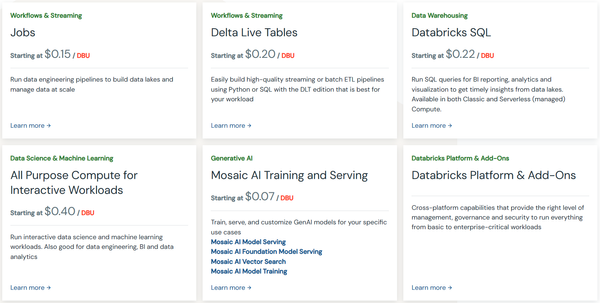
Note: Pricing for each product varies based on the chosen cloud provider, region, Databricks edition, and compute type.
Check out this article to learn more in-depth about Databricks pricing.
Microsoft Fabric and Databricks use distinct pricing models, each offering unique benefits. Fabric's capacity-based model offers predictable costs for steady workloads. Databricks' consumption-based model is more flexible. It allows for better control over spending, but costs can be variable. Fabric's pricing structure is comparatively straightforward, whereas Databricks' is more intricate. Notably, Databricks' pricing is consistent across cloud platforms. In contrast, Fabric is specific to Azure. The cost-effectiveness of each platform depends on the use case, workload, and existing investments.
Microsoft Fabric vs Databricks — Pros & Cons
Now that we've completed our extensive comparison of these two titans, let's highlight the essential pros and cons of each platform:
Microsoft Fabric Pros & Cons
Pros:
- Microsoft Fabric brings all the tools and services you need into one place, making it way easier to manage multiple vendors.
- Microsoft Fabric integrates well with other Microsoft services
- Microsoft Fabric is designed to scale according to business needs, handling varying data volumes and processing requirements without significant upfront investments.
- Microsoft Fabric incorporates robust security measures, including identity and access management, data encryption, and compliance management, ensuring data protection.
- Microsoft Fabric automates a lot of tedious backend tasks, so you can focus on what matters—analyzing data, not managing infrastructure.
- Microsoft Fabric's pricing is fair, based on what you use, which helps you save money and eliminates separate fees for different services.
- Microsoft Fabric does offer low-code features and AI-powered tools like Copilot, which assist in generating reports, writing code, and querying data, simplifying tasks for data engineers and analysts.
Cons:
- Microsoft Fabric can be tough to figure out and use, and when things go wrong, it's hard to fix. You'll likely need some serious training and know-how to get the hang of it.
- Running Microsoft Fabric can also be pricey and unpredictable, which might mean bigger bills than you expected.
- Microsoft Fabric currently does not support data warehousing across multiple geographies, which can limit its utility for global enterprises that require data to be accessible from various locations.
- The absence of generated or identity columns can pose challenges for certain data management tasks, potentially complicating data tracking and integrity.
- Since Microsoft Fabric is so closely tied to the Azure ecosystem, you'll need to carefully think about how to keep your data safe and comply with regulations before you fully commit to using it.
Databricks Pros & Cons
Pros:
- Databricks gives you one platform for data engineering, data science, and machine learning. It's all built on an open data lake house architecture.
- Databricks integrate seamlessly with open source tech stack like Apache Spark, Delta Lake, MLflow, and more. No vendor lock-in!
- Databricks auto-scale cluster resources for huge data workloads, which means you save money.
- Databricks offers enterprise-grade security features, including access controls, encryption, and auditing trails.
- Databricks enables collaboration through shared notebooks, dashboards, ML models, and data sharing via Delta Sharing.
- Databricks manages the entire ML lifecycle with tools like Mlflow, Model Serving, Feature Store, and Hyperparameter Tuning.
- Databricks allows open data exchange across organizations through the Delta Sharing protocol.
- Databricks provides extensive documentation and support from an active community.
Cons:
- Databricks has a steep learning curve, particularly for non-programmers due to complex setup and cluster management.
- Databricks can be expensive at scale if resource usage isn't monitored closely.
- Databricks' open source community is smaller compared to that of Apache Spark and other projects.
- Databricks offers limited no-code support, with less-evolved drag-and-drop interfaces.
- Databricks face data ingestion gaps, lacking comprehensive streaming capabilities compared to specialized tools.
- Databricks has inconsistent multi-cloud support, with some features not working uniformly across all cloud platforms.
That’s it! Keep in mind that both platforms are always changing, with new features and capabilities being added all the time. Something that's a limitation now might get fixed in a future update. Want to stay current on the latest developments? Check out their release updates for more info:
Further Reading
- Databricks documentation
- Microsoft Fabric documentation
- Databricks vs Snowflake
- Databricks Pricing 101
- Databricks Delta Lake 101
- Databricks Competitors
- Should You Start Using Microsoft Fabric Instead of Databricks?
- Everett Berry on Microsoft Fabric vs Databricks. Should Databricks be worried? What is Microsoft Fabric? | New Data Analytics Platform!
- Intro To Databricks - What Is Databricks

Want to take Chaos Genius for a spin?
It takes less than 5 minutes.
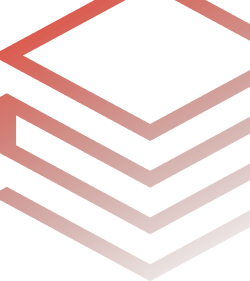
Conclusion
And that’s a wrap! Microsoft Fabric vs Databricks both offer killer analytics solutions, but they're meant for different teams. If you're already in Microsoft stuff, Fabric's your best bet—it works seamlessly with their ecosystem. Databricks, on the other hand, rocks at advanced analytics and machine learning, making it perfect for teams who want a comprehensive data platform. So, which one's right for you? It all depends on what your team needs, what tech you're already using, and what you want to achieve with your data.
In this article, we have covered:
- What is Databricks?
- What is Microsoft Fabric?
- Top 9 Difference Between Databricks vs Fabric
- Microsoft Fabric vs Databricks — Architecture Breakdown
- Microsoft Fabricc vs Databricks — Query Performance Battle
- Microsoft Fabric vs Databricks — Scalability
- Microsoft Fabric vs Databricks — Features, Ecosystem and Integration
- Microsoft Fabric vs Databricks — Security and Governance
- Microsoft Fabric vs Databricks — Machine Learning Capabilities
- Microsoft Fabric vs Databricks — Marketplace
- Microsoft Fabric vs Databricks — Cloud Platform and Partner Integrations
- Microsoft Fabric vs Databricks — Pricing Comparison
- Microsoft Fabric vs Databricks — Pros & Cons
… and more!!!
FAQs
What is Microsoft Fabric?
Microsoft Fabric is a comprehensive data analytics platform that provides a unified environment for data engineering, data science, machine learning, and business intelligence. It is built on top of Azure Synapse Analytics and Azure Data Factory, offering seamless integration with various Azure services.
What is Databricks?
Databricks is a data analytics platform known for its innovative Lakehouse architecture, which combines the features of a data lake and a data warehouse. It provides a unified platform for data engineering, data science, and analytics, prioritizing collaboration, scalability, and performance.
Can Databricks handle real-time analytics, and how does it compare to Microsoft Fabric?
Yes, Databricks supports real-time analytics through data streaming and its SQL serverless data warehouse, making it a powerful and scalable solution. Microsoft Fabric also offers real-time analytics capabilities.
Is Microsoft Fabric suitable for beginners in data analytics?
Yes, Microsoft Fabric is designed to be beginner-friendly with its no-code/low-code options and integrated tools, making it suitable for those new to data analytics.
What are the primary use cases for Databricks?
Databricks is commonly used for data engineering, data science, and business intelligence, enabling organizations to process and analyze large datasets effectively.
Is Microsoft Fabric suitable for organizations already using Microsoft products?
Yes, Microsoft Fabric is designed to integrate seamlessly with other Microsoft services, making it an ideal choice for organizations already leveraging Microsoft technologies.
How does the pricing model differ between Microsoft Fabric and Databricks?
Microsoft Fabric employs a capacity-based pricing model, while Databricks uses a usage-based pricing model, with costs determined by the resources consumed during data processing.
Can Databricks be used for machine learning?
Yes, Databricks offers extensive support for machine learning workflows, including integration with popular ML libraries and tools like MLflow for model management.
How do Microsoft Fabric and Databricks compare in terms of pricing?
It is difficult to directly compare the pricing of Microsoft Fabric and Databricks due to their different pricing models. Fabric has a flat pricing structure with a single SKU, while Databricks' pricing depends on the configured instance types and infrastructure.
Which platform is more suitable for enterprise data analytics?
Microsoft Fabric and Databricks each have their own superpowers. Fabric gives you a complete solution that's easy to use and looks familiar, while Databricks is all about advanced features and an open platform integrates well with third-party tools. Ultimately, the decision comes down to what you're looking for.

































